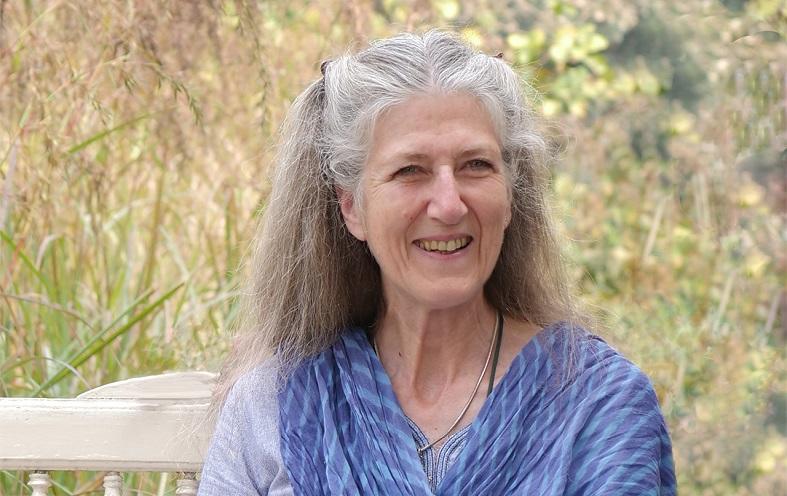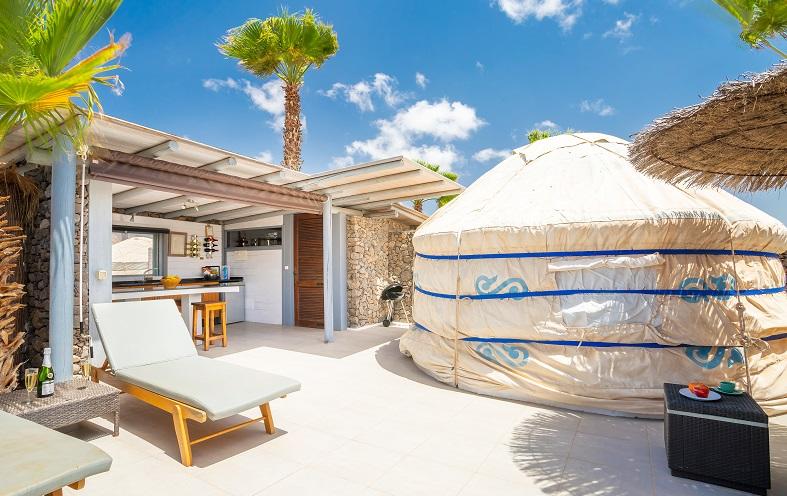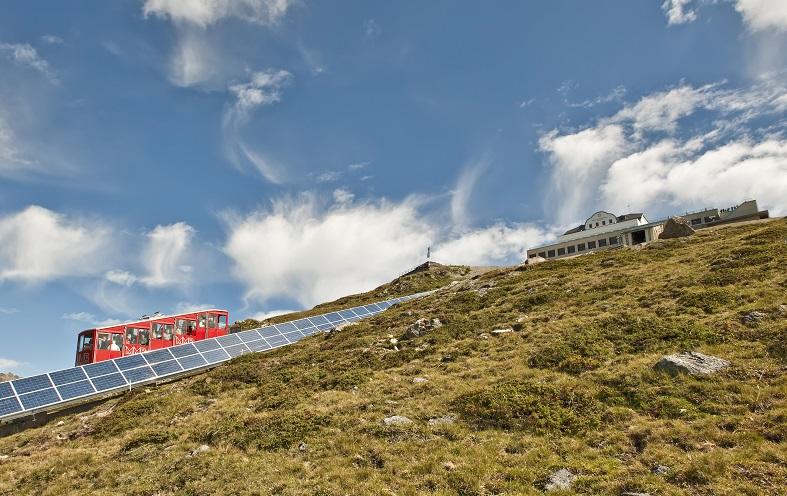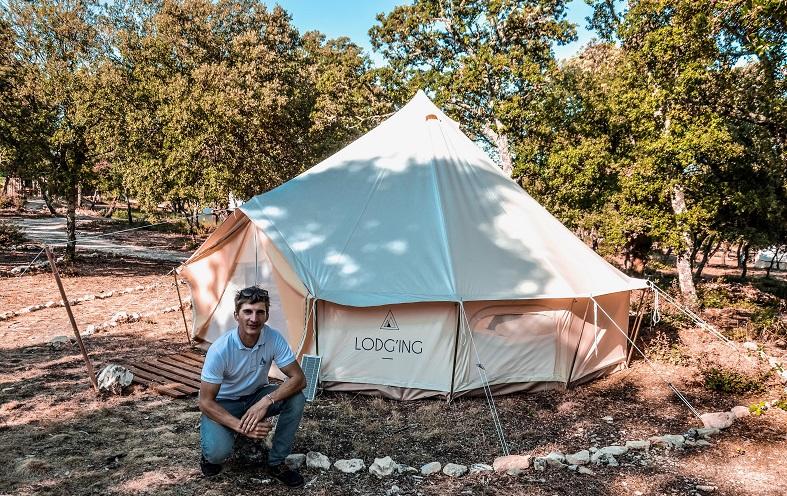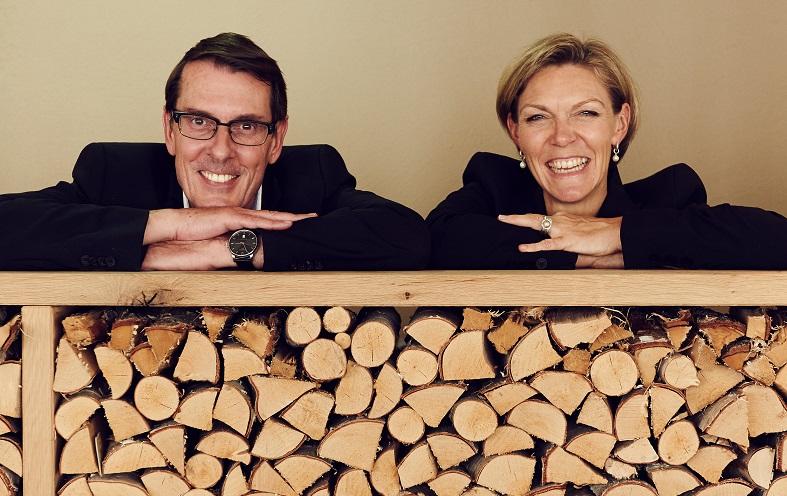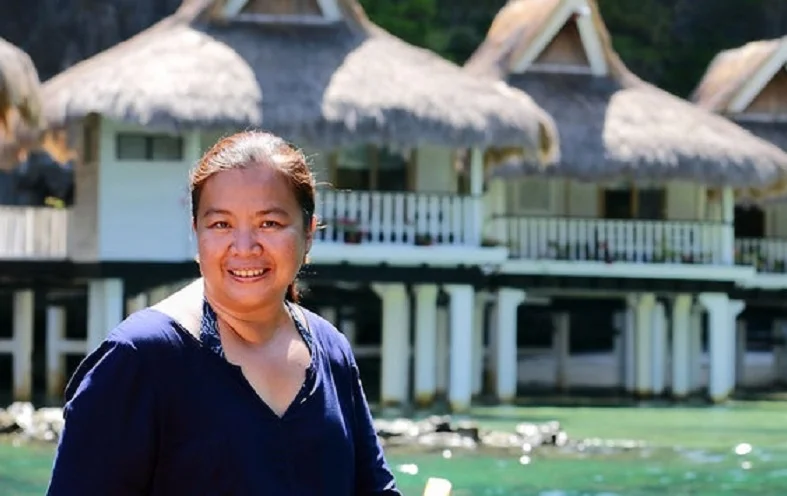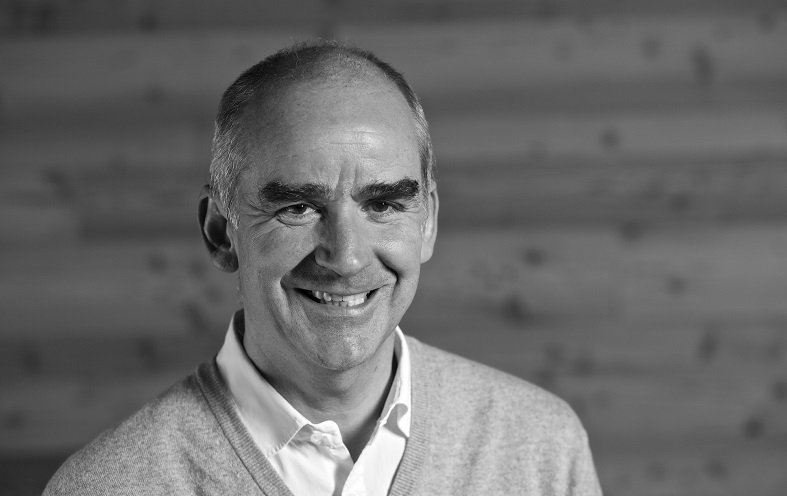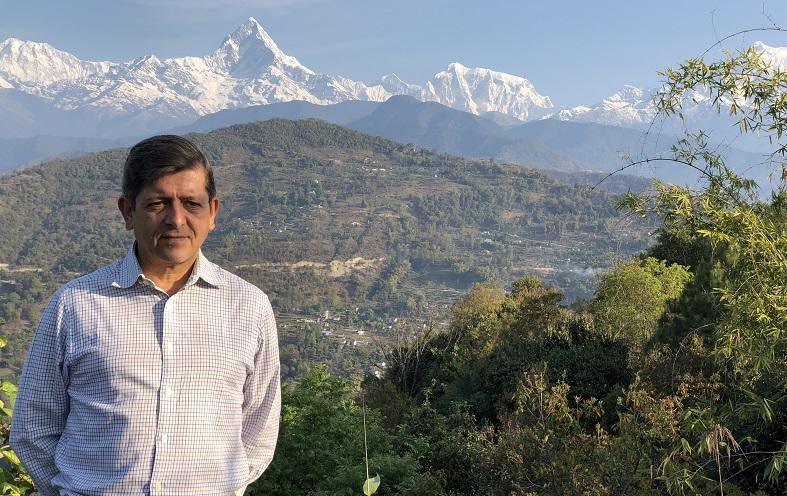
How do you ensure the environmental, social, and economic sustainability of an ecolodge nestled high up in the Himalayas? What are the challenges involved in running an eco-friendly lodge and how to resolve them using locally viable solutions?
Marcus Cotton, co-owner of the Tiger Mountain Pokhara Lodge in this interview illustrates what it takes to build a thriving hospitality business with a focus on local community well-being and environmental protection. He shares practical insights about hiring locals, social development initiatives, welfare activities and creative approaches towards achieving sustainability.
The professional training and economic opportunities provided to people from surrounding Nepali villages are a testament to his commitment to the empowerment of the locals.
Marcus, Tiger Mountain Pokhara Lodge in Nepal is widely praised as a real treat for environmentally conscious, discerning travellers, and a worthy example for other accommodation providers to follow. What makes the lodge so unique and successful in offering sustainable, authentic experiences?
I think we have several advantages. First, our location; with such an awe-inspiring Himalayan panorama, all (our guests and staff, we all gather to take the same pictures!) are uplifted on a clear morning by the sight of the snow peaks. Like Switzerland’s iconic Matterhorn, we have Machhapuchhare (Fishtail) framed right in our main doorway.
Coupled to that are our small size (only 18 rooms) and our almost zero staff turnover (all except of one have been with us for over 10 years and most of them from the start, 22 years ago). After all, it is that amazing team of dedicated staff that actually realize and implement our sustainability and authenticity. Add to that a wonderful heritage from Tiger Tops (Tiger) and Mountain Travel Nepal (Mountain) pioneers since the mid-60s in conservation tourism and our ‘founding fathers.’
Authenticity is, like ecotourism, such a right word but has become so over-used as to be devalued. This is a shame as there is an authenticity – we sum it up in the concept that, even if we had no guests, we would do things just the same – this is who we are. Heritage and continuity are vital, as the processes of being sustainable and being original or authentic take time to evolve and mature.
Yes, superficial things like zero-plastic can be implemented rapidly, but the deeper psychology and ethos can only evolve over time. I think also, we dare to be a bit different, and do not follow standard tourism/hotel patterns, structures, etc.
Why do you put so much focus on sustainability at Tiger Mountain Lodge?
Because it is right!
For me, and all the team, sustainability is non-negotiable. If one is in a business for the long term, then sustainability is an inherent part of your strategy and corporate DNA. Well, if it is not, you are not going to be sustainable.
I like the various aide-mémoires around, be it People / Planet / Profit or The Long Run’s 4 Cs: Community, Conservation, Commerce and Culture – these provide focus and a framework to guide decisions and visions.
The inspiration came from my youth in England, seeing a village flora prepared by my mother in the Second World War when evacuated to stay with friends in rural Buckinghamshire and one summer holiday I tried to replicate this at our home only a few miles away – and could only find half the flower species. Some fifteen years later, repeating the exercise floral diversity had fallen a further 50%. This shock, coupled with the drive for agriculture on an extractive and for-the-subsidies approach, struck me as inherently wrong and a dangerously short-term approach. Time and events appear to have proved me right and the world has woken to the global environmental threats we face.
Leap forward to the late 1990s when I had the immense privilege to live and work inside the then-named Royal Chitwan National Park, heading up the incomparable staff team at Tiger Tops. There I saw, from the inside, the amazing diversity, richness and unutterable beauty of the subcontinent’s wet sub-tropical jungle.
Being able to support the Department of National Parks and Nepal Army in their protection of this global asset, while, concurrently, providing livelihoods and social support for communities surrounding the park was an amazing and deeply fulfilling challenge. As was meeting so many ‘big names’ in conservation and related fields and sharing experience, ideas and concepts. Having the wonderful Dr. Charles (Chuck) McDougal as a mentor, guide and incomparable tiger conservationist iconoclast living at the lodge was the icing on the cake. No one could have a wiser, kinder or more mischievously funny guru.
Moving to Tiger Mountain in 2001 provided me with another challenge – after all, being sustainable inside a premier national park is relatively easy, the regulations are all on your side.
Doing true sustainability outside a park and in a community with diverse and different aspirations was a whole new focus for me and also for the lodge staff. Many of whom are from the local village. It required a re-focussing that took some time and a slowing up to accept that things taken for granted are not always the same for different communities. Written differently – don’t go like a bull at a gate!
Which aspects of running the ecolodge sustainably do you find the most challenging?
A hard question to answer, perhaps because the staff at Tiger Mountain are so enthusiastic and supportive that it is quite easy!
For tangible issues, it can be difficult in the supply of suitable products – for example, there are no effective eco-detergents for hotel laundry in Nepal. I tried to import a leading European brand, but the hurdles proved insurmountable, before considering the cargo miles.
Swiss winemakers support a vineyard in Nepal, but they still have a way to go before we can confidently offer their product!
It is the intangible elements that are the challenge and can be complex… building the psyche of the staff to think sustainable, to be sustainable and to enthuse about sustainability was perhaps the biggest challenge…that subtle move from head to both head and heart, as it were.
How do you overcome those challenges?
For the supply issues, we just have to work around them – surface cleaner made from vinegar infused with local orange peels being one example: kills the bugs, smells lovely and natural, uses local raw materials, provides local commerce, easy to produce in our kitchen too!
For the intangible, I think it is persistence, reminding, learning together and growing together as a team. Inevitably there is an element of 20:20 vision with hindsight, so I can look back and see where we were; where we are, and how we came to be here – well, that’s more complex as I know we are here, but I am not entirely sure how it happened! It did, it works, and we must have overcome the odd hurdle en route: leaped over, dodged around or flattened the hurdle? Probably a bit of all.
Back to my answer to your first question – having a great staff team is key. Also, having supportive guests who can see that one does not have to wear a hair-shirt to be sustainable.
To your mind, which are the main benefits of putting sustainability at the core of a hotel’s business strategy?
A brutal focus on money to start! At Tiger Tops we were able to double operating (or gross) profit just by being more sustainable in our stores and supplies: moving from expensive imported canned goods to local fresh products, profit and pleasure for our guests. Having a python voluntarily in the kitchen proved an interesting and effective way to control pests too!
Sustainability tends to incur some capital costs – for example to offset the use of LPG in our staff kitchens meant constructing a bio-gas digester. So we had to work hard to earn the profits to allow us to invest. This will pay dividends environmentally and financially in the years ahead.
Similarly, we need to invest in special cylinders to be able to buy commercial CNG from a local supplier, Gandaki Urja, that has just started production; CNG does not liquefy at relatively low pressures like LPG. Once we can afford this, we will offset or replace our guest kitchen LPG with locally harvested CNG.
Emotionally, knowing you are doing what you believe deeply to be right, drives confidence throughout the organisation and this has its own rewards across all aspects of the business.
Sustainability, or “responsible conservation tourism” as I like to define it, has received an enormous global boost from the likes of Sir David Attenborough and Greta Thunberg, as thought and activist leaders who have tapped effectively into mankind’s deep unease with the state of the earth.
Thus, being sustainable is something our guests (and thus our paymasters) are increasingly seeing as the sine qua non, a must-have of a business. This is no longer a niche element of tourism and as today’s challenges play out, it will move even closer to centre-stage.
How do you monitor sustainability at Tiger Mountain?
We both verify (audit against our own policy) and certify (audit against someone else’s standard). However, we do have difficulties with certification as it always tends to be a one-size-fits-all approach and takes little or no account of local diversities and ground realities.
Thus, we prefer independent verification which we do through Yardstick UK. This is a small enterprise founded by Jenefer Bobbin who did her postgraduate studies in Responsible Tourism at Leeds Metropolitan University under Professor Harold Goodwin. She came to work alongside us to develop a verification scheme primarily to counter greenwashing. We have continued with her to evolve this to a wider model – the process is ongoing – and we hope shortly to be able to integrate our sustainability actions with the relevant Sustainable Development Goals for the tourism business. With this we will lead on, I hope, to working towards carbon neutrality.
For certification we currently use Travellife, an EU-based GSTC affiliate, achieving Gold standard in 2017 and we currently are awaiting the result of our recent audit, late last year.
The challenge for certification agencies is to come up with a scheme that takes account of locale, locality, and humanity and does not try to shoe-horn everyone into a single box. I believe this is possible but requires a greater focus on the auditor’s discretion and local understanding.
I feel monitoring and knowing the facts of your performance is essential – for that all-important reality-check (pilots are taught early on to rely on their instruments, not their instincts), to justify and back up any claims made; to share with all the staff and stakeholders to show what you are doing, what you intend, where you want to go and how you hope to get there.
It is also an excellent means of promoting and marketing the property and business, and a way to raise awareness and consciousness about sustainability in both tourism as an industry and as individuals.
A fellow lodge operator once asked me about monitoring and what was the purpose. My answer was, whatever you want it to be. You can use it just for self-satisfaction and validation, for marketing, for developing community support fundraising, all sorts of things.
The current coronavirus pandemic has been hitting tourism and travel business hard these past weeks. How does it affect your business?
The current pandemic has an inevitable and significant impact on our business, being in the heart of the tourism sector. However, long experience in Nepal shows me you always have something going on! Political upheavals in 1990, 2006; Maoist Insurgency from 1996-2006; Earthquake 2015, etc…!!
A sustainable and responsible business has to manage these issues. I see everyone screaming for government bail-outs (how is the government to pay for medicines, protective gear, etc., if we all have tax holidays?). What about shareholder bail-outs?
To me, the shareholders are responsible for their businesses and must retain reserves and provide capital to cover these issues, like now the coronavirus pandemic. Their genesis and specifics are largely irrelevant – we know there will be something and therefore the business must be geared to covering whatever adverse issue arises.
We all have an absolute duty to our staff to support them in their careers – when the going is good we hear much of this from business leaders…..who go strangely quiet when headwinds arise! It is not good enough to put out mealy-mouthed announcements that ‘protection and safety of our staff are paramount’ while issuing forced redundancy notices.
For Tiger Mountain, we have ‘been here before’ and we will work our way through the current crisis. An absence of guests does not mean a shutdown of the ongoing show – there are many opportunities to handle matters we are often too busy to address – wider training options, increased community liaison and idea-sharing, initiation of new conservation projects, etc.
Apart from the many challenges that COVID-19 poses, do you think this crisis also presents an opportunity? How can we make the best out of it?
Absolutely, this epidemic has provided a perfect pause to review issues such as overtourism. It gives us time to explore better ways of doing things, gentler ways of diversifying tourism and a chance to promote sustainability in its widest remit to the industry.
It is a golden moment to listen – to our staff, our communities, our stakeholders and to see how we can do better, how we can enhance our linkages, increase our beneficial impacts and mitigate negative ones.
Commercially, we can explore different, alternative and diverse source markets.
Imagine you are at a conference and someone approaches you who is just about to start with a lodge similar to Tiger Mountain. What advice would you share, in terms of how to get started, and pitfalls to avoid?
I will share a story about a gentleman that visited Tiger Mountain to talk about building a lodge on his land some 60 minutes away. Douglas and I had a long chat about tourism and wandered around the lodge grounds.
My concluding advice was, above all else, one must get the environmental aspects right from the very start.
There are things I’d have loved to incorporate into the lodge design that was not and cannot easily be retrofitted. This, I am thrilled to say, he has done and way above anything I had imagined; he has set the bar high for small lodges in Nepal. Beyond that, it is essential to take time – as long as it takes – to listen to the local community, understand their expectations, fears, desires, and aspirations.
Far too many times tourism rides roughshod over local stakeholders or pays lip-service only to stakeholder concerns. This is perhaps tourism’s Achilles-heel and an aspect that needs far more focus.
Finally, be yourself, be your project, don’t mimic others. I am still trying to understand what that ridiculous coloured runner 2/3 way down the bed in most hotels is for! To me, it serves only to show that the owners/managers lack vision and are copying… ‘because that’s what hotels do.’
Thank you, Marcus.
Connect with Marcus Cotton on LinkedIn or follow what’s happening at the Tiger Mountain Pokhara Lodge by visiting its website, Facebook or Instagram.
Enjoyed our interview with Marcus Cotton about the wonders that can be achieved when adhering to sustainability as the corporate DNA of a hotel business? Please share and spread the word!

